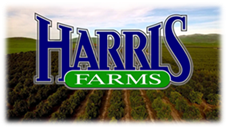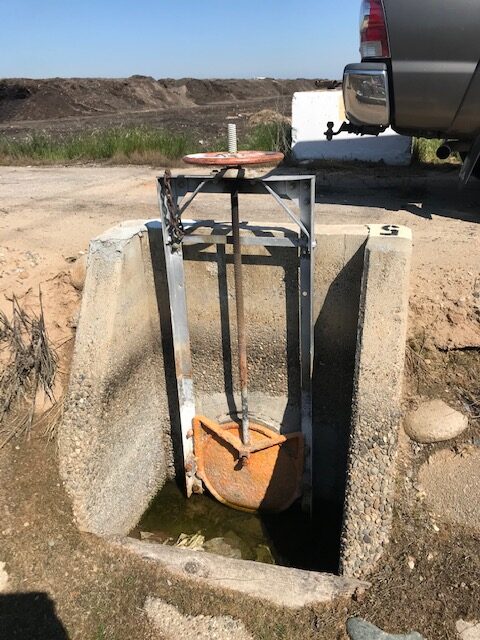As we’ve noted previously, the Madera County Board of Supervisors is the Board for the Madera GSAs in the Madera, Chowchilla and the Delta Mendota Subbasins. While the Supervisors meet frequently every month, the second Tuesday at 10:30 a.m. is set for the GSA activity and this month was no exception. The agenda had created lots of interest since the topic of groundwater allocations and the establishment of farm units had been carried over from last month.
The Meeting
So, it was at 10:36 a.m. when the Supervisor Board Chair Rob Poythress shifted to the topics of GSA reports and groundwater allocations. Stephanie Anagnoson, the director of the Water and Natural Resources Department, who has been driving this process began with a presentation. She began by saying the word is the current drought is the worst since 1977. She said also that the first reviews of GSPs from state Department of Water Resources have been posted. Some plans have not been approved because of the impact on domestic wells of continued ag pumping. She pointed out that recharge and land repurposing are important elements of the Madera plans with allocations only one piece of the plan, but one that has been fraught from the beginning of SGMA discussions in the county.
topics of GSA reports and groundwater allocations. Stephanie Anagnoson, the director of the Water and Natural Resources Department, who has been driving this process began with a presentation. She began by saying the word is the current drought is the worst since 1977. She said also that the first reviews of GSPs from state Department of Water Resources have been posted. Some plans have not been approved because of the impact on domestic wells of continued ag pumping. She pointed out that recharge and land repurposing are important elements of the Madera plans with allocations only one piece of the plan, but one that has been fraught from the beginning of SGMA discussions in the county.
The Proposals
She began by reviewing the extensive schedule of advisory committee and outreach meetings, including office hours. She included fact that the Advisory Committee issued a final report in December and that at the May 11 board meeting, some firm numbers were presented to the Board – option A, she called it . She said there had been plenty of reaction and on June 1 she had held a meeting 100 people on Zoom and 20 in room.
She then reminded the audience of the terms, “applied water” which is put on crops but is different from EVT water… evapotranspiration… water actually used by a crop and measured by satellite. She reviewed the historical evapotranspiration of applied water for three major crops… 34 inches / yr for almonds, 30 inches for pistachios and 20 inches for grapes.
Next, she presented a chart detailing the amounts of sustainable yield (SY) water and transitional water (TW) that showed amounts of water available in each of the three subbasins if the base year was 2015 or if the base year was 2020, when water usage had increased. She detailed how TW totals would decrease at the proposed two percent year rate for the first five years. For example, in the Madera Subbasin, TW would decrease from 101,000 AF/year to 90,900 AF/year if the 2015 year were used. While if 2020 was the base year ETAW the amounts would decrease from 113,000 AF/year to 101,700 AF/year.
Three Options
With this background she began to present the detail of three allocation plans referred to as A, B and C.
as A, B and C.
Option A would use the 2015 ETAW water amounts and would allow the inclusion of never irrigated land in farm units. In the Madera Subbasin, the SY water amounts to 90,000 AF divided by 85,000 irrigated acres combined with 35,000 never irrigated acres (mainly rangeland) with nine inches of annual water available per acre. The transitional water (TW) was calculated at 98,980 AF divided by 85,000 acres with a resulting 14 inches of TW. So, Plan A results in 23 inches of water per acre available for irrigated land.
Option B would use the 2020 ETAW water amounts and similarly would allow the inclusion of the 35,000 acres of never irrigated land in farm units. Using the same approach for SY and TW, the total allocation would be 24.6 inches of water per irrigated acre.
Unhappily, at this moment, about 10:50 a.m., AT&T internet service to the County office building went down, leaving all those online without any opportunity to hear the speakers and see the presentations. The Board suspended its meeting, and everyone was notified that it would resume at 12:15 p.m., subject to internet availability. Apparently, AT&T found the gremlins, internet connections were restored, and the meeting resumed at the scheduled time with Ms. Anagnoson continuing.
She then presented Plan C, which uses the 2020 ETAW volumes but, significantly, does not allow the inclusion of never irrigated land in the farm units for use of transition water, concentrating TW on the 85,000 irrigated acres in the Subbasin. Never irrigated acres are not eligible to opt-in for transition water. As a result, 28.6 inches of water per irrigated acre is estimated to be available.
As she concluded her description of this detail for Option C, she announced that the staff was recommending its adoption by the Board. Additional language to the resolution offered a further definition of irrigated land… land that was irrigated as of June 8, 2021 or was now fallow but had been irrigated as recently as January 1, 2015. 
Board Discussion
Next came discussion by the Board members beginning with Supervisor David Rogers. He said this is not a circumstance that any of us likes. He blamed mis-management by the state of California with water being sent down the river for fish at the expense of human needs. He said when we say this is the best option it is a bitter pill to swallow and without water. After a few more comments about the marketplace setting differential property values for land with and without access to water, he raised the challenges faced by dairy producers as opposed to growers and ranchers. He said they are currently required to create, file and administer nutrient management plans requiring water and land. He said that with these constraints, dairies aren’t scalable like crop farmers who can fallow land. He said there are 21,000 acres in the “white areas” covered by nutrient management plans. He proposed a 15-year moratorium enforcement of allocations on such lands which represent a $600 million industry in Madera County. He said without some consideration, there would be no dairy in the county.
Supervisor Brett Frazier asked about how water allocations would be enforced. Director Anagnoson explained SGMA allows the GSA to impose a fine of up to $1500 per acre. He asked about legal action regarding never irrigated lands and the reply was that law does not recognize the value of unpumped water. More discussion centered on opportunities to financially incentivize owners of never irrigated lands to not plant those acres.
Supervisor Tom Wheeler wondered about the possibility of those with rangeland selling the water rights, but the reply was that would require a water market which does not exist currently and would require extensive work to establish, although it’s being investigated using grant funding.
With remarks from Supervisors concluded, Chairman Poythress opened the floor to public discussion, beginning with those individuals present at the meeting.
Public Response
Speaking first was Sally Roberts who farms with her family with both irrigated farmland and never irrigated rangeland. She opposes Option C saying they had always tried to keep their water use in balance, limiting their irrigation to do so. She said they had never overdrafted in order to maintain a sustainable farm unit. She said Option C “blows us out of the water” because they will have to pay now for their water. “We are already where we should be in 2040 and our neighbor can get that water… it’s just wrong.”
Speaking next was Clay Daulton who had served on the Advisory Committee. He opposes Option C saying reductions should be greater than the two percent per year. He predicted SGMA will result in “amazing increases in almond prices” because orchards will have to be taken out of production.
Attorney Lyle Wagner saying he represented a number of significant landowners of rangeland.
also opposed Option C because it allows the transfer of water from never-irrigated to irrigated land and is therefore an unlawful taking.
Rancher Wayne Cederquist pointed out there are two different types of never irrigated land. One is where water is accessible but has never been used by the landowner and the other is where it’s simply not available with underlying rock. He said this resolution will affect small farmers who will have to fallow land to pay for water and therefore will be forced to sell out to larger neighbors.
Impassioned opposition to Option C was voiced by Erik Smith of the Smith Adobe Ranch, what he called the oldest continuous farming operation in the county with mixed cattle and planting. He and without the opportunity to include rangeland in their farming unit it would be disastrous for them. He said outside consultants had urged them to plant an additional 3000 acres of orchards, but his family had never wanted to drill more and deeper wells.
Farmer Norman Allender said he believed Option B was the most equitable.
Speaking both for the local cattlemen’s association and her own ranch, Michele Lasgoity endorsed Options A or B but not C. She said the groundwater underlying rangeland was part of its value and that the 100,000 acres of rangeland in the county had been providing beneficial use to the white areas capturing rainfall that goes into the aquifer. She said her family had been raising beef and farming sustainably including some irrigated acres, which we view as a farm unit. She called it “unfathomable” that Option C is in the best interests of the region.
Madera grower Bill Diedrich, also an Advisory Committee member, said he appreciated the service of the Supervisors and that he was there to support Option C. He said it affords the greatest number of options for the farm culture of Madera County. He said he farms a number of smaller plots from I-5 in the west to Biola in the east and he knows regulations aren’t always fair. He predicted that if landowners had not been using their water rights, they would not get them with adjudication.
Jim Maxwell is a large operator with irrigated land and cattle ranches. He said he had farmed as far east as possible and had no expectation to expand in the Northeast section of the county and $3 per acre property tax there reflected that. Another member of the Advisory Committee, he said he had supported a gradual “glide path” in water reduction and supported anything other than Option C.
Identifying herself as a fifth generation rancher, Betsy Cardoza said that rangeland owners had never asked to be put in the “white areas.” She said, “You’re saying if we don’t develop our land, we don’t deserve our water.”
Dairy farmer Greg Hooker from Chowchilla, also an Advisory Committee member, asked if the five acres he uses for a solar farm would be counted toward irrigated land for his farm unit.
Fourth generation rancher Daryl Silveira pointed out that everyone has his own axe to grind in this issue and that these are difficult decisions. He said in his opinion those who have contributed to the overdraft are being rewarded more than those of us who haven’t. “I don’t support C,” he concluded.
Madera grower Igal Treibatch acknowledged the Supervisors have a tough job, but he said they are doing things that make no sense. For his own operation, he had purchased never irrigated land in order to supplement his irrigated farming. Under this proposal, he said that those who took his water now have the chance to purchase it, even though they’re the ones who created the problem in the first place. He said he had been farming for 30 years and had been trying to do it sustainably. He said he wished others had taken that same approach. He praised Director Anagnoson’s work but said he asked that the Board vote for something more equitable than Option C.
but he said they are doing things that make no sense. For his own operation, he had purchased never irrigated land in order to supplement his irrigated farming. Under this proposal, he said that those who took his water now have the chance to purchase it, even though they’re the ones who created the problem in the first place. He said he had been farming for 30 years and had been trying to do it sustainably. He said he wished others had taken that same approach. He praised Director Anagnoson’s work but said he asked that the Board vote for something more equitable than Option C.
A gentleman who identified himself as a farm manager but whose name we couldn’t catch was the last on site speaker, urging support for Option C. He said if there are legal battles over beneficial use, it’s highly likely Option C would prevail.
Online Opinion
With no other speakers at the meeting, Chairman Poythress recognized several online participants, beginning with Julia Berry representing the Clayton Water district of some 3,400 acres in the Chowchilla Subbasin. She said her Board had not taken a position on the Options being presented but had continuing interest in water measurement technology. She said the Irriwatch satellite remote sensing technology seemed useful but didn’t always match what is going on in the field. She said her group wants to stay involved and help with refining measurement.
technology. She said the Irriwatch satellite remote sensing technology seemed useful but didn’t always match what is going on in the field. She said her group wants to stay involved and help with refining measurement.
Speaking for the Leadership Council NGO and advocating for disadvantaged communities, Madeline Harris expressed concern that the drought would amplify overdraft problems resulting in more alarming impacts on drinking water sources. She said the county had already had to spend $9 million for assistance with community water systems and residential wells in communities like Fairmead. She urged adoption of a strong Option A with attention paid to intensive farming areas that impacted residential wells. She emphasized that continuing overdraft threatens the livability and quality of life of all residents.
An attorney for MAWA (Madera Area Water Association), white area farmers, Michelle Staples said her group supports Option C. She said it protects beneficial uses (irrigation) without diminishing the overlying rights of never irrigated lands, which in many cases aren’t suitable for irrigated farming in any event.
Jack Rice a grower with MAWA said its members support Option C as the best and most defensible approach which also minimizes harm to irrigators.
Speaking for a commission of local governments, Danielle Dolan said over drafting needs to be curbed and supports immediate action. She said a strengthened version of Option A needs to be passed immediately.
There being no further public comment, the Supervisors considered what they had heard while preparing to act. Frasier said he had been dreading this day since he first ran for office but wanted to help find the best way forward for the community… “without change our county will dry up.” He cited a rancher who said she would continue to ranch but wanted her sustainable yield intact. Director Anagnoson said all the SY water was accounted for, and consultant Greg Young said the effort had been to offer some certainty to growers but also retain some flexibility. He noted the continuing drought might mean the region would be worse off in five years.
With that, Supervisor Rogers moved the resolution implementing Option C with the proviso that detail be developed to consider the land of dairy producers committed to nutrient management plans. I regret that I could not hear who offered the second, but Supervisors now discussed this historic motion. Supervisor Tom Wheeler expressed the thought that now some 35,000 acres won’t be irrigated when a few years ago they couldn’t agree on a moratorium on new wells. After commenting on his preference for T-bone steaks over almonds, he noted with no water there wasn’t much value. He said they had to look out for the health of Madera County, and he would reluctantly support the motion for Option C.
steaks over almonds, he noted with no water there wasn’t much value. He said they had to look out for the health of Madera County, and he would reluctantly support the motion for Option C.
Supervisor Leticia Gonzalez asked that the supplemental language regarding the definition of irrigated lands be put on the screen and then said while it’s a difficult decision there was no going back to an earlier time when action might have been easier. She said we all have family and friends who will be affected.
Chairman Poythress said we need to move forward with the plan as defined now and that it can be adjusted as necessary in the future with such things as an opt-in for Sustainable Yield. On a role call vote, the resolution adopting Option C was passed unanimously. Poythress concluded saying that the reduction of two percent per year is called for in the GSP but in 2025 a higher percent reduction might have to be discussed.
The meeting ended at 2:25 p.m. as the Board took a brief recess before returning to the Supervisors’ other county agenda… no doubt also to take a breath after this intense session.
The Madera County Board of Supervisors acting as the Board of the GSAs in the county meeting on June 8 adopted a significant resolution implementing water allocations and farm units. From left are Brett Frazier, David Rogers, Chairman Robert Poythress, Leticia Gonzalez and Tom Wheeler. -photo courtesy of Madera County
DISCLAIMER OF RESPONSIBILITY; Waterwrights strives to provide clients with the most complete, up-to-date, and accurate information available. Nevertheless, Waterwrights does not serve as a guarantor of the accuracy or completeness of the information provided, and specifically disclaims any and all responsibility for information that is not accurate, up-to-date, or complete. Waterwrights’ clients therefore rely on the accuracy, completeness and timeliness of information from Waterwrights entirely at their own risk. The opinions expressed in this report are those of the author and do not represent any advertisers or third parties.
ALL RIGHTS RESERVED. Copyright 2020 by WaterWrights.net
Madera County is comprised of three subbasins, designated by the CA Department of Water Resources as critically overdrafted, and “high priority”: (1) the Chowchilla Subbasin; (2) the Madera Subbasin; and (3) a portion of the Delta-Mendota Subbasin. Each of these subbasins submitted a Groundwater Sustainability Plan (GSP) by January 31, 2020. These subbasins are required to achieve “sustainability” by the year 2040. The method by which sustainability will be achieved will be illustrated in the GSP, which was be drafted in partnership by the irrigation district, water districts, cities and Madera County. The Madera County Groundwater Sustainability Agency (GSA) is administered by the Madera County Department of Water and Natural Resources: Stephanie Anagnoson, Director, 200 W. Fourth Street, Madera, CA 93637, (559) 675-7703 x. 2265 or (559) 675-6573. The County of Madera Board of Supervisors is the Board of Directors of the GSAs for the three subbasins. The current board is composed of five members: Robert Poythress, chair, Brett Frazier, Letitia Gonzalez, David Rogers and Tom Wheeler.































